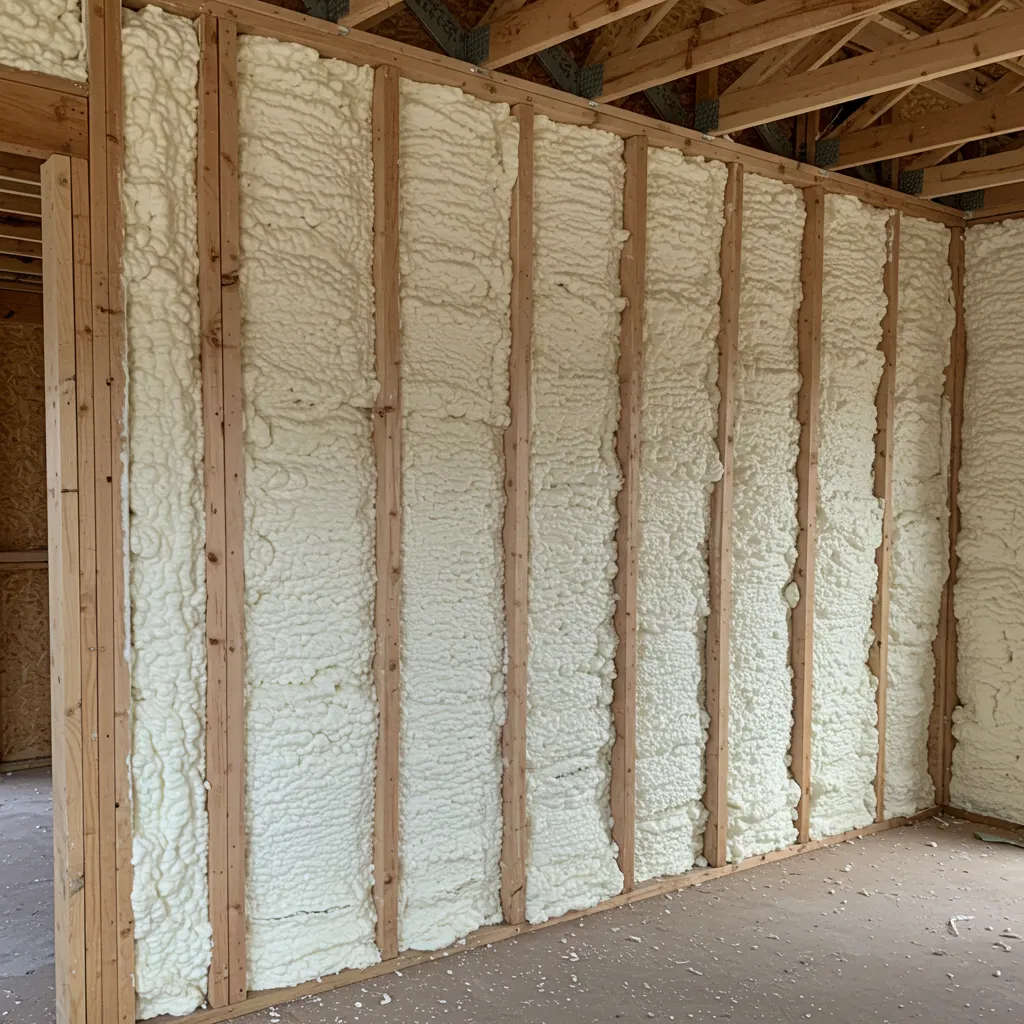Spray foam insulation is highly praised for its energy efficiency, airtight seal, and long-lasting performance. However, there are certain situations where it may not be the best choice. Understanding these limitations can help me make informed decisions about my insulation needs in Dallas, TX.
Situations Where Spray Foam Should Not Be Used
1. Historical or Older Homes
Many historical homes rely on natural ventilation to manage moisture. Spray foam insulation creates an airtight seal, which can trap moisture inside the walls, leading to mold growth and wood rot.
Why Is This a Concern?
- Moisture Retention: Older buildings often lack vapor barriers, leading to trapped moisture.
- Structural Integrity: Rigid spray foam can apply pressure on aging wooden structures, causing potential damage.
- Preservation Regulations: Some historical properties have restrictions against modern insulation methods.
2. Areas with Poor Ventilation
Attics, crawl spaces, or wall cavities with limited airflow may not be suitable for spray foam. Without proper ventilation, excess moisture can become a serious issue.
Risks Involved
- Condensation Issues: Without ventilation, condensation can accumulate within the foam.
- Odor Build-Up: Chemicals in spray foam can emit odors in poorly ventilated spaces.
- Compromised Indoor Air Quality: Lack of fresh air circulation may lead to respiratory concerns.
3. Situations Requiring Frequent Renovations
If I expect to renovate or update a space frequently, spray foam may not be the best insulation option.
Why?
- Difficult to Remove: Unlike fiberglass or cellulose insulation, spray foam is not easily reversible.
- Interference with Electrical and Plumbing Work: Cutting through hardened foam for repairs or updates can be challenging.
- High Replacement Costs: Once installed, removing or modifying spray foam insulation is costly and labor-intensive.
4. High Humidity Environments
While closed-cell spray foam has moisture-resistant properties, high-humidity environments can still pose risks.
Challenges
- Traps Excess Moisture: In humid areas, water vapor can become trapped within the foam.
- Mold Growth: If improperly installed, moisture can lead to mold and mildew issues.
- Potential for Degradation: Prolonged exposure to humidity can impact the foam’s longevity.
5. Temporary Structures or Rentals
Spray foam insulation is a long-term investment, making it impractical for structures that are not intended for permanent use.
Considerations
- Expensive for Short-Term Use: Given its durability, spray foam is not ideal for temporary structures.
- Removal Challenges: Removing spray foam for relocation or structural changes is complex.
- Better Alternatives: Fiberglass or mineral wool may be more cost-effective for temporary setups.
Health and Safety Concerns
1. Allergic Reactions and Sensitivities
Some individuals may be sensitive to the chemicals used in spray foam insulation, particularly during installation.
Symptoms May Include:
- Eye, nose, and throat irritation
- Respiratory issues
- Headaches or dizziness
2. Off-gassing and VOC Emissions
During the curing process, spray foam releases volatile organic compounds (VOCs), which can affect indoor air quality.
Key Factors
- Curing Time: Full curing can take up to 24-48 hours, during which strong odors are emitted.
- Ventilation Needs: Adequate airflow is necessary to disperse chemicals.
- Sensitive Individuals: People with asthma or chemical sensitivities should avoid the area during installation.
3. Risk of Improper Installation
If not applied correctly, spray foam can cause issues rather than solve them.
Potential Issues
- Expansion Problems: Over-expansion can lead to structural pressure.
- Air Pockets: Uneven application can leave gaps, reducing insulation efficiency.
- Fire Hazards: If installed near heat sources without proper fire-rated barriers, it can pose a fire risk.
Cost and Financial Considerations
While spray foam insulation is highly efficient, it may not be the best choice in certain financial situations.
1. Budget Constraints
The upfront cost of spray foam insulation is significantly higher than traditional insulation materials.
Price Comparison:
| Insulation Type | Cost Per Sq. Ft. Installed |
| Fiberglass | $0.40 – $1.50 |
| Cellulose | $0.60 – $2.30 |
| Spray Foam | $1.00 – $4.50 |
2. Return on Investment (ROI) Limitations
If my property does not require long-term insulation benefits, the high cost may not be justified.
When It May Not Be Worth It:
- Short-Term Ownership: If I plan to sell my home within a few years.
- Minimal Energy Savings: In homes that are already energy-efficient, the added benefit may not justify the cost.
- Limited Use Spaces: Garages or outbuildings that are rarely used may not need premium insulation.
Alternatives to Spray Foam Insulation
If spray foam is not the right choice, other insulation materials may be better suited for my specific needs.
Best Alternatives:
- Fiberglass Insulation: Affordable and easy to install, but less effective at sealing air leaks.
- Cellulose Insulation: Eco-friendly and provides good thermal performance, though it can settle over time.
- Mineral Wool: Fire-resistant and excellent for soundproofing, though slightly more expensive.
- Rigid Foam Boards: Provide good insulation for walls and foundations but require precise installation.
Conclusion
While spray foam insulation offers many benefits, it is not a one-size-fits-all solution. I should carefully assess my property’s needs before investing. Factors such as ventilation, structural integrity, humidity levels, and budget constraints should all be considered before choosing spray foam.
Contact Us
If I’m unsure whether spray foam insulation is the right choice, consulting with an expert can help. Dallas FFM Spray Foam Insulation provides professional guidance to ensure I make informed decisions about my insulation needs.
Frequently Asked Questions
Is spray foam safe for all homes?
No, it is not suitable for older homes, poorly ventilated areas, or properties that require frequent renovations.
Does spray foam insulation trap moisture?
Yes, especially if installed in areas with poor ventilation, leading to mold and structural issues.
How long does spray foam insulation last?
When installed correctly, it can last 20-30 years, but improper application can reduce its lifespan.
What are the health risks of spray foam insulation?
Potential health risks include chemical sensitivities, respiratory issues, and off-gassing during installation.
Can spray foam be removed?
Yes, but it is labor-intensive and costly compared to other insulation materials.
Is spray foam better than fiberglass insulation?
It depends on the use case. Spray foam provides superior air sealing, while fiberglass is more affordable and easier to install.
Can spray foam be used in humid environments?
It is not recommended for high-humidity areas without proper moisture management systems.
Does spray foam insulation affect home resale value?
In some cases, yes. However, improper installation can negatively impact home value.
How long does spray foam take to cure?
It typically takes 24-48 hours to fully cure and off-gas before the area is safe for occupancy.
What are the alternatives to spray foam insulation?
Fiberglass, cellulose, mineral wool, and rigid foam boards are all viable alternatives depending on specific needs.



